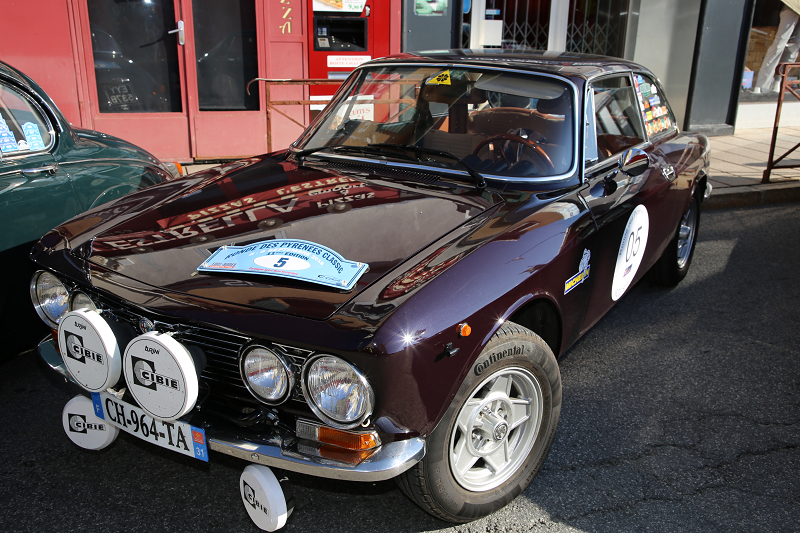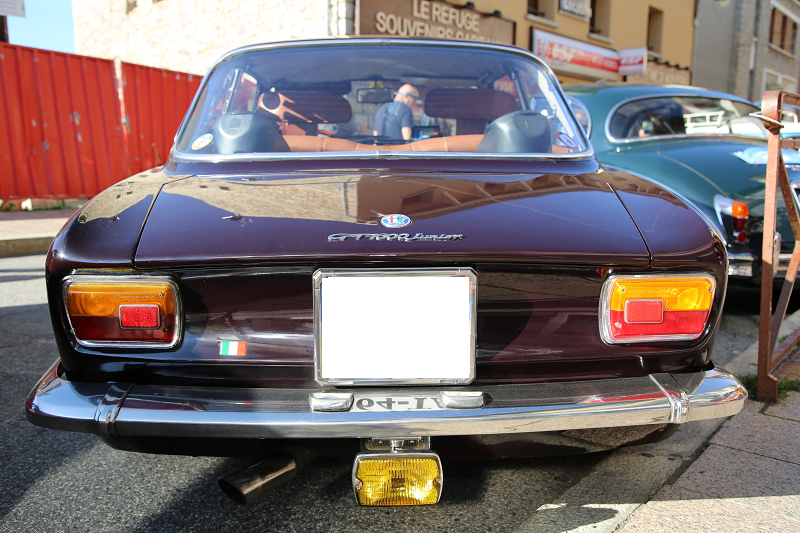Brown Alfa Romeo GT 1600 Junior. Production years: 1972–1976. Engine – 1.6 L Twin Cam I4
The Alfa Romeo 105 and 115 series coupés are a range of cars made by the Italian manufacturer Alfa Romeo from 1963 until 1977, based on a shortened floorpan from the Giulia saloon. They were the successors to the Giulietta Sprint coupé.
The basic body shape shared by all models was designed by Giorgetto Giugiaro for Bertone. It was one of his first major projects for Bertone, and borrowed heavily from his earlier design for the Alfa Romeo 2000 Sprint/2600 Sprint. The balance of glass and metal, the influence of the shape of the front and rear glass on the shape of the cabin, and the flat grille with incorporated headlamps were groundbreaking styling features for the era.
A limited production (1000 units) convertible was a modification from the standard car by Touring of Milan, offered as a catalogue model by Alfa Romeo called the Giulia Sprint GTC.
A small number of the GT Junior Zagato were also built with a very different, aerodynamic two-seater coupé body designed by Ercole Spada for Zagato of Milan. These too were offered by Alfa Romeo as catalogue models, as the GT 1300 Junior Zagato and later GT 1600 Junior Zagato.
GT 1600 Junior (1972–1976)
The Alfa Romeo GT 1600 Junior was introduced in 1972, to plug the gap between the GT 1300 Junior and the larger-engined 2000 GTV. In the UK right-hand-drive market the GT 1300 Junior was dropped, but in many other markers the two models were available as a range. The engine was substantially the same as that of the Giulia Sprint GTV discontinued four years previously, and had the same engine type number. The final drive ratio was again 9/41 as standard on all 105 Series coupés with the 1290 cc and 1570 cc engine.
Record exist on the Classic Alfa Romeo register of a RHD GT 1300 Junior which was made and delivered to the UK in 1972 AR 1296169.
From 1974 on, the GT 1300 Junior and GT 1600 Junior were rationalised into a common range of models with the 2000 GTV and were rebadged as 1.3 GT Junior and 1.6 GT Junior, sharing most of the interior and exterior features with the larger-engined car. The only exterior differences were no bumper over-riders, lack of C-pillar green serpent badges, small rear light clusters same as pre-’74 Juniors and GT 1300 Junior or GT 1600 Junior badge on the boot.
Apart from the engine size, the only mechanical differences were: smaller front brakes, as the Juniors had not adopted the larger units fitted to the 1750 GTV and 2000 GTV from 1968 on, differential ratios (Junior models 4.55:1, 2000 GTV 4.1:1) and 5th gear ratio (GT 1300 Junior 0.85:1, all other Alfa Romeo 105 models 0.79:1).
The GT Junior has a tight suspension and weighed in at just 2,050 pounds (930 kg) for the 1.3 variant. Because of this, the car would often go onto three wheels, lifting the inside front wheel off the road when driven enthusiastically.
Production ended in 1976-77 and totalled 91,964 units of 1.3 lt. Juniors and 13,120 units of the 1.6 lt. Juniors.












